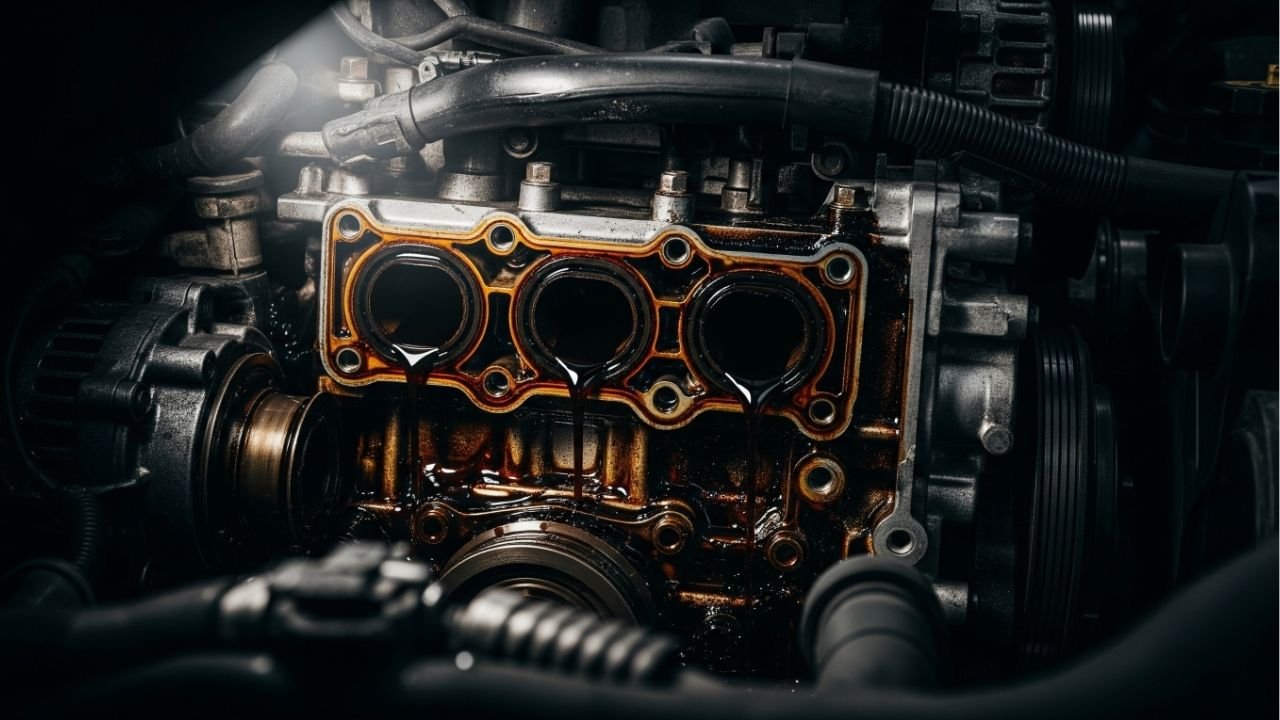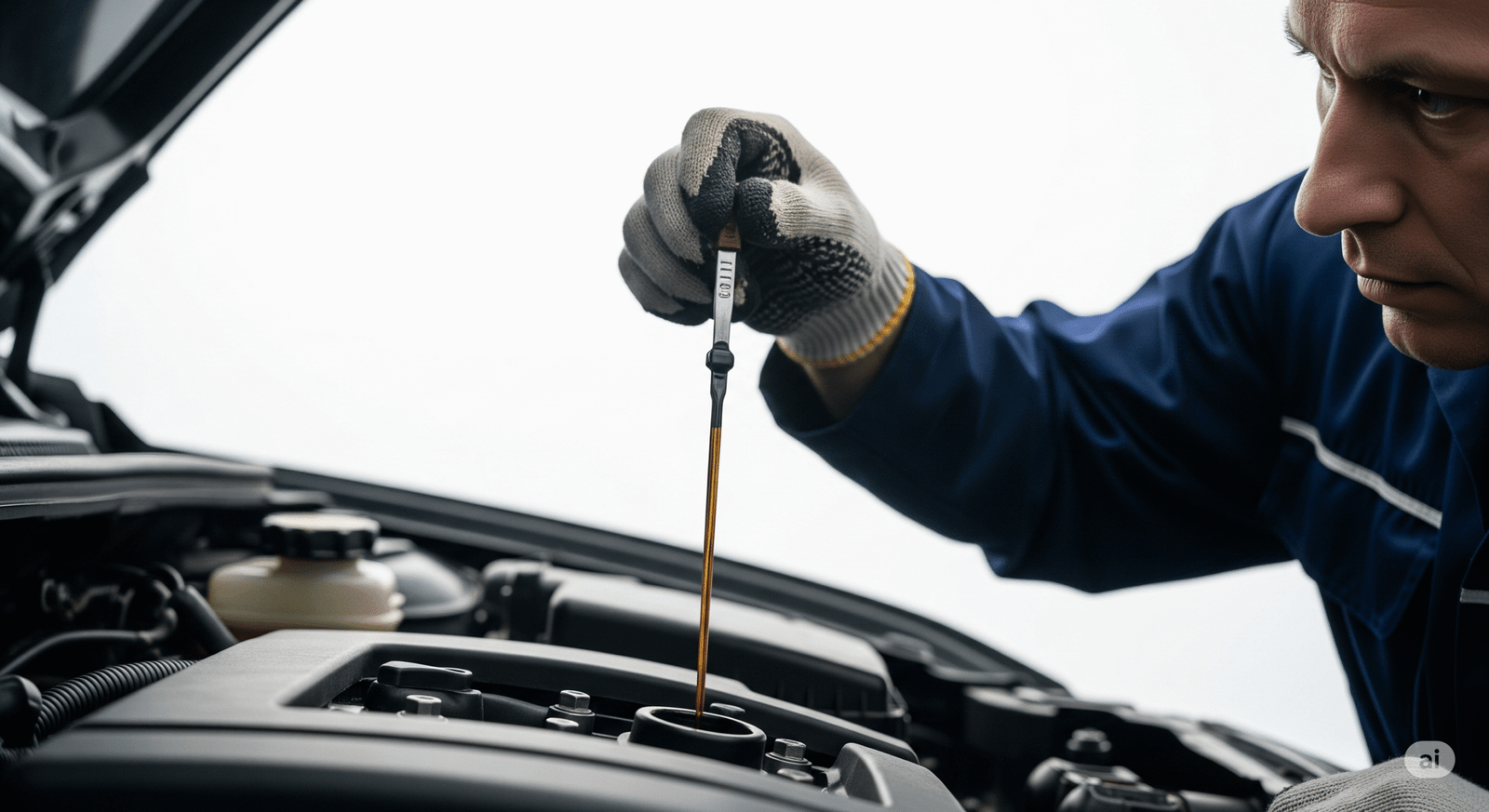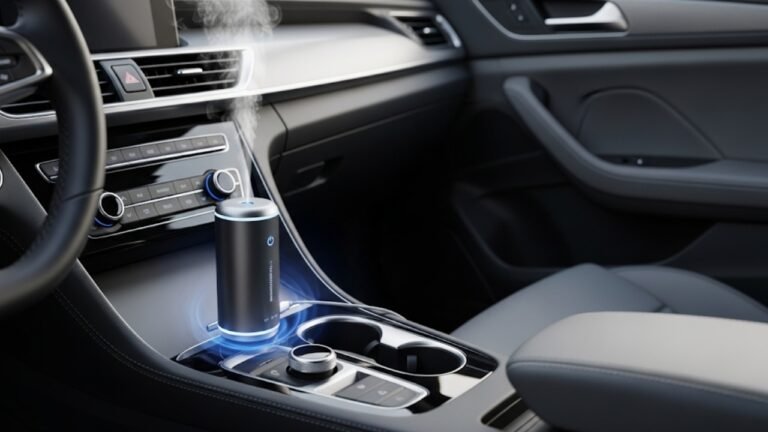What Happens If You Put Too Much Oil in a Car?

Have you ever overfilled your car’s engine oil, thinking “more oil = more protection”? I did once. And let me tell you—it wasn’t pretty. The truth is, while engine oil is vital to your car’s health, putting too much oil in a car can be just as harmful as running it low.
It’s like making a cup of tea and pouring water to the brim. One bump and it spills everywhere. With your car, that “spill” can mean internal damage, performance issues, and expensive repairs.
In this article, we’ll dive deep into what happens if you put too much oil in a car, how to notice the signs, how it affects your engine, and what you should do if it happens. I’ll break it down in plain English with some real-life experiences, expert advice, and a touch of storytelling that’ll make it all stick.
In This Article
- 1 Why the Right Oil Level Matters So Much
- 2 Personal Story: How I Learned the Hard Way
- 3 Symptoms of Too Much Oil in Your Car
- 4 What Happens Inside the Engine When Overfilled?
- 5 Will Too Much Oil Damage the Engine?
- 6 How to Check If You’ve Overfilled the Oil
- 7 How to Fix Overfilled Oil (Don’t Panic!)
- 8 Quick Do’s and Don’ts
- 9 Long-Term Risks of Driving with Too Much Oil
- 10 Can Too Much Oil Cause a Fire?
- 11 How Mechanics Spot Overfilled Engines
- 12 Preventing Oil Overfill: Your Go-To Guide
- 13 When to Seek Professional Help
- 14 Real-Life Experiences from Drivers
- 15 FAQs About Too Much Oil in a Car
- 15.1 1. Can you drive a car with too much oil?
- 15.2 2. How much oil is “too much”?
- 15.3 3. Will excess oil burn off naturally?
- 15.4 4. Can too much oil cause my engine to smoke?
- 15.5 5. Is draining oil at home safe?
- 15.6 6. Does the check engine light come on from too much oil?
- 15.7 7. What if I overfilled oil once—should I worry?
- 15.8 8. Can too much oil void my car warranty?
- 16 Final Thoughts: Less Is Sometimes More
Why the Right Oil Level Matters So Much

Think of your engine like a marathon runner. It needs just enough water (oil) to stay hydrated—not so much that it drowns. Overfilling throws off the balance.
When you add too much oil, here’s what can happen:
-
Increased pressure inside the engine
-
Oil foaming due to the crankshaft churning oil
-
Damage to gaskets and seals
-
Reduced lubrication efficiency
-
Poor fuel economy and sluggish driving
This isn’t just speculation—mechanics see it every day.
Personal Story: How I Learned the Hard Way
A few years ago, I borrowed my uncle’s car. I decided to top off the oil as a “helpful” gesture. But I didn’t use the dipstick to check first. Big mistake.
After driving just a few miles, the car started acting weird. The engine felt sluggish, and smoke came out from under the hood. My heart dropped. I pulled over, and after a tow truck and a few hundred dollars, the verdict was clear: I had put too much oil in the car.
The oil had foamed, reducing its ability to lubricate. The spark plugs were soaked, and pressure had damaged a seal. Lesson learned: always check the level first!
Symptoms of Too Much Oil in Your Car
If your car has too much oil, it’ll usually let you know. Pay attention to these red flags:
Warning Signs to Look Out For:
-
White or blue smoke from the exhaust
-
Burning oil smell while driving
-
Oil leaks under the vehicle
-
Rough idling or strange engine noises
-
Check engine light turning on
Each of these is your car whispering—or yelling—“Help me!”
Too much oil in a car can also cause the crankshaft to dip into the oil and whip it into a froth. This “foamy” oil doesn’t lubricate well, which can lead to overheating or engine wear.
What Happens Inside the Engine When Overfilled?
To truly understand the damage, picture this: your engine is a sealed environment where everything works with precision. Now imagine stuffing in too much oil. It’s like adding too much soup into a pressure cooker—it creates excess pressure and chaos.
Here’s a quick breakdown of what goes wrong:
| Component Affected | What Happens When Overfilled |
|---|---|
| Crankshaft | Whips oil into foam, reducing lubrication |
| Pistons | Increased resistance and pressure |
| Gaskets & Seals | May burst or leak under pressure |
| Spark Plugs | Can become oil-soaked, misfire |
| Catalytic Converter | Damaged by burning oil residue |
This pressure build-up doesn’t just stay in the oil pan—it spreads throughout the engine, creating long-term damage.
Will Too Much Oil Damage the Engine?
Yes, definitely. If you’re lucky, you’ll only deal with decreased fuel economy or a sluggish ride. But in many cases, it leads to serious engine damage.
Here’s how:
-
Oil pressure increases, stressing seals and causing leaks
-
Foamed oil loses its lubricating properties
-
Bearing wear accelerates due to lack of proper lubrication
-
Engine overheating becomes more likely
Some newer cars might warn you before damage is done. But most won’t until it’s too late.
How to Check If You’ve Overfilled the Oil
Checking your oil is simple, yet so many drivers skip it. Trust me—two minutes with a dipstick can save you thousands.
Here’s how to do it right:
-
Park your car on level ground and turn off the engine.
-
Wait 5–10 minutes for oil to settle.
-
Pull out the dipstick, wipe it clean.
-
Insert it back fully, then pull it out again.
-
Look for the “MIN” and “MAX” markers.
If the oil line is above the max mark, you’ve got too much. If it’s just a bit over, you may be okay for a short drive. But anything more means action is needed.
How to Fix Overfilled Oil (Don’t Panic!)
If you’ve realized that you’ve put too much oil in a car, don’t panic. It’s fixable. Here’s what you can do:
Your Options:
-
Drain the excess oil using the drain plug (messy, but effective).
-
Use an oil extractor pump through the dipstick tube—cleaner and easier.
-
Visit a mechanic or oil change shop for help if unsure.
Important tip: Don’t drive far before fixing it. The longer the engine runs with too much oil, the higher the risk of damage.
Quick Do’s and Don’ts
Here’s a quick list to keep in mind:
✅ Do:
-
Always check oil with the dipstick before topping up
-
Use the correct oil grade and quantity for your car
-
Read your vehicle manual’s oil capacity
❌ Don’t:
-
Assume “more is better” when it comes to oil
-
Drive long distances with oil overfilled
-
Ignore strange engine behavior after an oil change
Long-Term Risks of Driving with Too Much Oil
If you keep driving your car with too much oil, it’s like walking on a tightrope with no safety net. At first, everything might seem fine. But slowly, the damage builds.
Here’s what can go wrong over time:
Blown Seals and Gaskets
Too much oil creates internal pressure. That pressure finds the weakest spots in the engine, usually the seals and gaskets. Once these burst or crack, oil leaks start. And they’re messy. Your engine bay might be covered in grime. Worse, leaking oil can land on hot parts and burn—creating smoke, smell, and even fire hazards.
Expensive Engine Repairs
Running an engine with overfilled oil can wear out parts faster. Especially the rod bearings and pistons. This can lead to knocking sounds, reduced engine power, and ultimately—total engine failure. At that point, you’re looking at a complete rebuild or even engine replacement, costing thousands of dollars.
️ Damage to Emission System
Extra oil can seep into the catalytic converter, one of the most expensive parts in your exhaust system. It’s not meant to handle oil, only burned gases. Oil contamination can kill it slowly, triggering check engine lights and failing emissions tests.
Performance Drop and Poor Mileage
Foamy oil doesn’t lubricate properly. That means increased friction, higher engine temperatures, and sluggish performance. Your car might hesitate to accelerate, run rough, or guzzle more gas than usual. That’s money right out of your pocket.
Can Too Much Oil Cause a Fire?
It sounds dramatic, but yes—too much oil can start a fire. It usually happens like this:
-
Oil spills out due to blown seals.
-
That oil lands on hot engine components like the exhaust manifold.
-
If it ignites, you get smoke first… then flames.
While rare, engine bay fires due to oil overfill have happened. It’s one more reason to act fast if you think your oil is too high.
How Mechanics Spot Overfilled Engines
When a car comes into a shop running weird, one of the first things a good mechanic checks is the oil level.
Here’s what they look for:
-
Dipstick over the max mark
-
Signs of frothy oil
-
Oil in the air filter box
-
Burnt oil smell under the hood
-
Oil leaks around seals or gaskets
They might also pull out the spark plugs to check for oil fouling or run a compression test to look for deeper damage.
Preventing Oil Overfill: Your Go-To Guide
Avoiding too much oil in a car is easier than dealing with the aftermath. Here’s a quick cheat sheet to keep your engine safe:
Prevention Tips:
-
Always check the dipstick before topping off.
-
Know your car’s exact oil capacity (found in the manual or online).
-
Use a measured oil container with volume markings.
-
After adding oil, wait a few minutes and check again.
-
Avoid using old or inaccurate oil jugs.
One more pro tip? Don’t let someone else “guess” during oil changes. Watch the process or ask for a printout of how much oil they added.
When to Seek Professional Help
If you suspect you’ve added too much oil but aren’t confident draining it yourself, it’s okay to call in a pro.
Take your car to a trusted mechanic, quick lube shop, or dealership service center. It might cost a little, but catching the issue early could save your engine.
It’s not just about fixing the oil level—it’s about inspecting for possible damage from the overfill.
Real-Life Experiences from Drivers
Sarah, 28 — Honda Civic Owner:
“I was rushing and poured a whole quart into the engine, not realizing it only needed half. Two days later, my car was smoking, and I had to replace a valve cover gasket. I learned the hard way that precision matters.”
Jamal, 42 — Former Auto Technician:
“You’d be shocked how many customers came in after DIY oil changes gone wrong. People assume more oil means safer engine. But I’ve seen engines totaled from just one quart too many.”
These stories aren’t rare. The moral? A little knowledge and caution go a long way.
FAQs About Too Much Oil in a Car
1. Can you drive a car with too much oil?
Only for a very short distance. If it’s slightly overfilled, you might be okay. But anything beyond that increases the risk of damage. Drain the extra oil ASAP.
2. How much oil is “too much”?
Even half a quart over can cause issues, depending on the engine. If the oil level is above the MAX mark on the dipstick, that’s already too much.
3. Will excess oil burn off naturally?
No. While oil can burn in small leaks, you shouldn’t count on it “going away.” Overfilled oil continues to cause pressure and problems until it’s drained.
4. Can too much oil cause my engine to smoke?
Yes. White or blue smoke usually indicates oil is entering the combustion chamber or burning on hot surfaces. That’s a warning sign of overfill damage.
5. Is draining oil at home safe?
Yes, if done correctly. Use jack stands, a drain pan, gloves, and follow your manual. You can also use a suction pump through the dipstick tube.
6. Does the check engine light come on from too much oil?
It can. Excess oil may cause misfires or sensor malfunctions, which trigger the check engine light. Don’t ignore it.
7. What if I overfilled oil once—should I worry?
If it’s minor and you fixed it quickly, probably not. But if you drove long with too much oil, have a mechanic inspect for damage.
8. Can too much oil void my car warranty?
Yes, especially if it causes engine failure. Most warranties exclude improper maintenance, including overfilled or incorrect oil use.
Final Thoughts: Less Is Sometimes More
Now you know exactly what happens if you put too much oil in a car—and why it’s more than just a small mistake. It’s one of those things that seems harmless at first, like an extra scoop of ice cream… until your stomach starts hurting. The engine feels that pain too, only it shows up as smoke, leaks, or a ruined catalytic converter.
But here’s the good news: you don’t need to be a pro mechanic to avoid it. A little attention, a dipstick check, and knowing your oil capacity is all it takes to keep your engine healthy.
Treat your car like a friend. Give it just what it needs—not more, not less.






